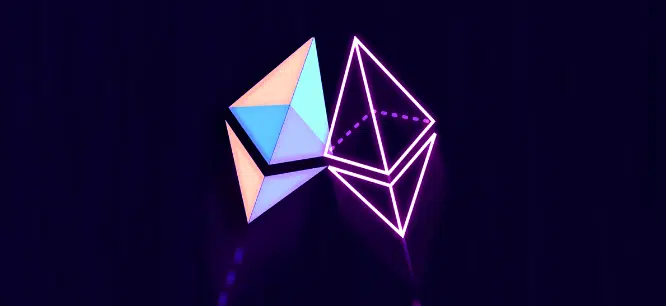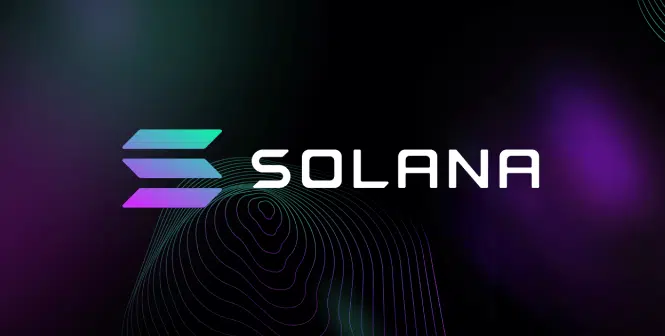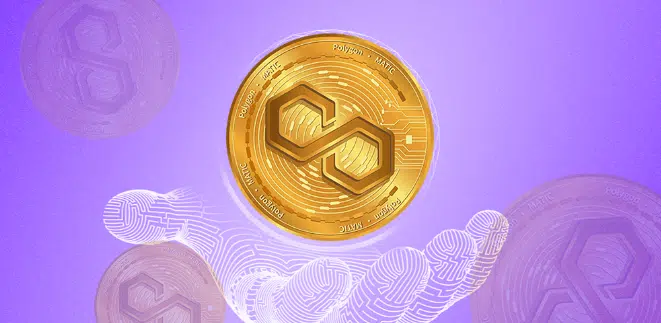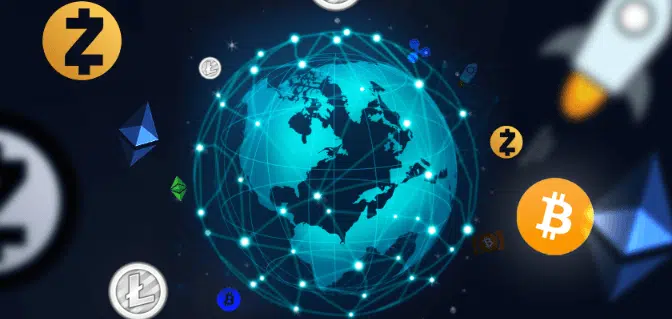TLDR
This article will explore “What is the next Bitcoin?”. Here is the complete list of where there is a lot of potential:
- Ethereum
- Ripple
- Litecoin
- Solana
- Cardano
- Binance Coin
- Avalanche
- Polkadot
- Polygon
When choosing the next Bitcoin, consider adoption potential, price performance, liquidity, market cap, capitalization, development team, regulations, and market trends. Do thorough research due to cryptocurrency investment risks. Even though most cryptocurrencies’ future remains uncertain, experts see the potential for growth and challenges ahead.
Cryptocurrencies that could become the Next Bitcoin
Here are some popular cryptocurrencies with Bitcoin alternatives with the potential to become the next Bitcoin:
1. Ethereum

Ethereum blockchain is a decentralized platform that enables the creation and operation of smart contracts and decentralized apps (dApps). It aims to establish a global and inclusive financial ecosystem, eliminating intermediaries and ensuring global transactions’ transparency, security, and reliability.
One significant advantage of Ethereum is its native ether (ETH) cryptocurrency. Ether serves multiple purposes within the Ethereum network. It rewards validators who contribute to the security and stability of the blockchain by staking their coins.
Ether also facilitates off-chain payments, making it a viable digital currency for various transactions. Furthermore, Ether has gained traction as an investment asset on crypto exchanges, attracting speculators recognizing its potential for long-term growth and value appreciation.
The transformative power of Ethereum extends beyond conventional financial systems and has built a reputation as the fastest smart contracts platform. By using Ether, individuals in underserved regions lacking traditional infrastructure can access vital financial services such as banking, loans, and crypto-insurance, accessing a way to passive income.
Ethereum blockchain technology’s decentralized nature empowers those who may have been excluded from traditional financial institutions due to nationality, ethnicity, or religious background, providing them with equal opportunities and financial inclusion.
Pros
- A leading platform for smart contracts and DApps.
- Offers programmable transactions and complements Bitcoin.
- Potential for complex financial applications.
- It is a great option for developers to build.
Cons
- Ongoing transition to proof-of-stake.
- Scalability challenges during high network traffic.
2. Ripple

Ripple is a cryptocurrency and payment network facilitating seamless, low-cost, and rapid cross-border transactions. Unlike Bitcoin and traditional cryptocurrencies that rely on mining, Ripple operates on a unique consensus mechanism called the Ripple Protocol Consensus Algorithm.
It enables financial institutions to settle payments and remittances quickly, providing an alternative payment method to slow and expensive traditional banking systems. Ripple’s native currency, XRP, is a bridge currency that can efficiently facilitate transfers between different fiat currencies.
Ripple has become a prominent figure in international transactions by teaming up with multiple banks and financial institutions globally. Their primary goal is to enhance global payment systems.
Pros
- Facilitates fast, low-cost cross-border transactions.
- Preferred by banks and financial institutions.
- The consensus mechanism is independent of mining.
Cons
- Centralized nature raises concerns.
- Regulatory uncertainties as security.
3. Litecoin

Just like Bitcoin, Litecoin is a decentralized cryptocurrency that uses blockchain technology. This means that it operates on a peer-to-peer basis without intermediaries.
Whether you’re a seasoned crypto investor or just starting, these similarities make Litecoin popular for those seeking a secure and reliable digital currency.
However, it differentiates itself through certain key features. Litecoin boasts faster block generation times, enabling quicker transaction confirmations and a higher supply limit, quadrupling the maximum number of coins compared to Bitcoin.
Additionally, Litecoin employs the Scrypt hashing algorithm, which favors memory over processing power, making it more accessible to casual miners.
Litecoin is a digital currency that is becoming famous for everyday transactions because of its low transaction fees and wide acceptance. It is considered a strong competitor to Bitcoin due to its stable presence in the largest cryptocurrency exchange by market cap and being one of the earliest altcoins.
Pros
- It is considered a lightweight, cheaper version.
- Active and supportive community.
Cons
- Scalability challenges are similar to Bitcoin.
- Lower market capitalization and liquidity.
4. Solana

Solana has garnered attention as a high-performance blockchain platform for its exceptional transaction processing capabilities. Claiming to be the fastest blockchain in the world, the Solana blockchain leverages an innovative consensus mechanism called proof-of-history.
By incorporating timestamps into the consensus process, Solana achieves remarkable scalability, processing over 50,000 transactions per second. This impressive throughput has positioned Solana as an ideal choice for decentralized applications, particularly those involving high-frequency trading and real-time data processing.
Furthermore, Solana has become increasingly popular within the non-fungible token (NFT) space, offering a reliable infrastructure for trading NFTs and digital assets.
Solana has become a significant player in the blockchain ecosystem due to its emphasis on speed, scalability, and support for innovative applications.
Pros
- It claims to be the fastest blockchain.
- Growing popularity in the NFT and DeFi space.
- Innovative proof-of-history consensus.
Cons
- Less adoption compared to Ethereum.
- Limited interoperability with other chains.
5. Cardano

Cardano represents a third-generation blockchain platform that addresses earlier iterations’ limitations. Cardano is a platform created by a skilled team of experts and researchers. It mainly targets scalability, security, and sustainability.
To achieve energy efficiency and reduce the environmental impact, the platform uses the Ouroboros proof-of-stake consensus mechanism instead of traditional proof-of-work systems.
Cardano has garnered attention for its rigorous scientific approach, conducting extensive research and peer-reviewed audits to ensure robustness and reliability.
Cardano is implementing network and protocol upgrades, called the Alonzo era, to make blockchain networks introduce smart contract capabilities. This will create opportunities for decentralized applications and encourage blockchain innovation in different industries.
Pros
- Research-based approach with peer-reviewed principles.
- Aims for scalability, security, and sustainability.
- Utilizes Ouroboros proof-of-stake.
Cons
- Early development and adoption stages.
- Smart contract implementation is ongoing.
- Competes with established platforms.
6. Binance Coin

Binance Coin (BNB) is the native cryptocurrency of the Binance exchange, the world’s largest cryptocurrency trading platform. Initially launched as an Ethereum-based token, BNB has since transitioned its native tokens to its popular blockchain, the Binance Smart Chain (BSC).
BNB offers utility within the Binance ecosystem, allowing users to pay for trading fees, participate in token sales, and access various services and benefits on the platform.
The Binance Smart Chain provides a scalable infrastructure for decentralized applications. Plus, it offers compatibility with the Ethereum Virtual Machine (EVM) and supports smart contracts.
Binance’s original cryptocurrency has experienced significant growth, reflecting the popularity of the Binance exchange and its expanding ecosystem.
Pros
- The native token of the world’s largest exchange, Binance.
- Offers utility within the Binance ecosystem.
- Supports smart contracts and DApps.
Cons
- Relies on Binance’s success.
- Vulnerable to regulatory risks.
7. Avalanche

Avalanche is a cryptocurrency and smart contract platform prioritizing high throughput, low latency, and low transaction fees. It achieves these goals through its novel consensus mechanism called Avalanche Consensus.
This mechanism utilizes a network of validators to achieve consensus rapidly and securely. Avalanche supports multiple blockchains and interoperability with other popular blockchains and networks, enabling seamless asset transfers and decentralized applications across different platforms.
With its focus on scalability and efficiency, Avalanche has garnered attention for its potential to become a robust infrastructure for decentralized finance (DeFi) applications and other blockchain technology-based innovations.
The platform’s decentralized crypto exchange, Pangolin, also contributes to its growing ecosystem of decentralized apps. It helps ensure users a secure and efficient way to trade between digital currencies and traditional assets.
Pros
- Uses Avalanche Consensus for high throughput and low fees.
- Supports multiple blockchains and interoperability.
Cons
- Relatively new project.
- Needs broader adoption and recognition.
- Competition from established platforms.
8. Polkadot

Operating as a multi-chain blockchain platform, Polkadot aims to enable seamless interoperability and communication between blockchains. Polkadot employs a relay chain, which acts as the heart of the network, connecting and coordinating various parachains.
Parachains, specialized blockchains within the Polkadot ecosystem, benefit from the shared security and infrastructure the relay chain provides. Additionally, this architecture enables Polkadot to address scalability and compatibility challenges individual blockchains face.
The platform also supports cross-chain communication, enabling data and asset transfers between blockchains. With its focus on interoperability and scalability, Polkadot aims to foster a connected and inclusive blockchain ecosystem and gaming platform where diverse applications and services can thrive.
Pros
- Connects multiple blockchains.
- Enables cross-chain communication.
Cons
- Requires development of parachains.
- Competes with other multi-chain platforms.
- Expanding ecosystem and adoption.
9. Polygon

Polygon, previously known as Matic Network, operates as a layer-two scaling solution for Ethereum. It aims to address Ethereum’s scalability issues by providing a framework for building and connecting scalable sidechains to the Ethereum main net.
Polygon’s architecture allows for faster and cheaper transactions while maintaining a high level of security through a network of validators.
It supports various scaling techniques such as plasma, zk-rollups, and optimistic rollups, offering developers a range of options to optimize their decentralized applications.
Polygon has gained recognition for its ability to enhance user experience, reduce gas and lower transaction fees everywhere, and provide a seamless transition for Ethereum-based projects seeking scalability solutions.
Pros
- Scales Ethereum with faster, cheaper transactions.
- Supports various scaling techniques.
Cons
- Relies on Ethereum’s scalability improvements.
- Competition from other Ethereum scaling solutions.
Where to buy the next Bitcoin?
If you’re searching for the lowest price for following prominent cryptocurrencies, finding a reputable and secure crypto exchange platform for buying and trading is essential. Binance and eToro are two such crypto exchange platforms worth considering.
Binance offers a wide selection of over 350 cryptocurrencies for trading and investment. It also features its native token, BNB, which provides additional benefits on the platform. With a user-friendly mobile app, powerful desktop platform, and developer-friendly API, Binance caters to various trading preferences.


More details
Binance is a great combination of low fees, deep liquidity and multiple cryptocurrencies and trading pairs. We have tested every aspect of it and it STILL holds its reign as the top exchange in the world. In our view, it is the perfect crypto exchange for both newbies and advanced traders alike.
-
Biggest exchange in the world.
-
Industry's lowest trading fees.
-
Advance trading options like leverage trading.
-
600+ crypto options, 150+ for the US.
-
Lucrative on-site staking options.
-
Hiccups in account verification.
-
Less regulated than some competitors.
-
The corporate structure is not transparently.
eToro is another platform that offers commission-free trading of stocks, commodities, and digital assets. It features unique options like the ability to copy the strategies of successful investors, access thematic portfolios, and earn rewards by staking out other cryptocurrencies and crypto assets.
With a simple mobile app, a web-based platform, and a large community of users, eToro provides a user-friendly trading experience.


More details
eToro is a popular online trading platform for crypto assets, stocks, and ETFs, featuring low fees and a user-friendly interface. With a free eToro wallet and social features like messaging boards, users can copy experienced traders and access numerous assets. Take a look at what makes this platform perfect for starting your trading journey.
-
Provides an attractive, communal atmosphere.
-
Offers zero commission on ETFs.
-
Extensive selection of educational resources.
-
Mobile app with trading features.
-
Smooth account opening and bank transfer.
-
Limited number of cryptocurrencies.
-
Limited customer support.
-
No crypto-to-crypto trading pairs.
Both Binance and eToro are regulated by authorities worldwide and prioritize the security of user funds and data. Signing up is quick and easy, allowing you to start trading within minutes.
How many cryptocurrencies are there?
This disruptive potential of big cryptocurrency can democratize the financial system. Over 10,000 cryptocurrencies have experienced exponential growth in the market, showcasing numerous innovations and collectively amassing a total market capitalization exceeding $1.1 trillion.
The abundance of new cryptocurrencies can be attributed to most of them being derived from Bitcoin. BTC uses open-source code and possesses a resilient architecture resistant to censorship.
This design allows anyone to replicate and modify the code, creating unique digital coins. Many entities engage in this practice for various reasons, contributing to the diverse range of cryptocurrencies available today.

Should you invest in the next big crypto?
Considering investing in the next Bitcoin requires careful thought. The charm of finding a promising cryptocurrency is vital for crypto investors, as it could yield significant profits in the early stages. However, it is crucial to recognize that this pursuit of crypto is challenging, time-consuming, and highly risky.
To begin with, you must explore other cryptocurrencies beyond the established market leaders. While smaller cryptocurrencies may have more growth potential, they also have a higher risk of failure, which means a greater chance of losing your entire investment. It may be wise to allocate some of your funds to buy cryptocurrency in stocks or large-cap coins to mitigate this risk.
Researching these smaller cryptocurrencies demands a significant amount of time. Moreover, even if a project appears to be a surefire success, the volatile nature of the crypto market means that unexpected outcomes are possible.
Your diligently researched investment could yield no results, while a seemingly useless cryptocurrency might experience a sudden surge simply because it incorporates popular terms like Shib or Dogecoin.
Following or attempting to predict cryptocurrency market trends does not constitute a sound investment strategy. While there is no harm in giving it a try, it is crucial to maintain low expectations and invest only a minimal amount of money.

Things to consider when determining the next Bitcoin
Several vital factors need consideration to determine which cryptocurrency has the potential to become the next Bitcoin or challenge its dominance. Let’s delve into each point in more detail:
Potential application or adoption
This factor examines the practicality and value a cryptocurrency offers to its intended users. Cryptocurrencies that enable faster, cheaper, and more secure transactions or facilitate smart contracts tend to attract a more extensive user base and gain investor interest.
Ethereum, Cardano, and Polygon are some significant examples of offering powerful and secure transactions. More significant potential for application or adoption enhances demand and subsequently increases the original cryptocurrency’s value.
Price history and performance
Evaluating the historical price changes of a cryptocurrency provides insights into its market strength and stability.
Some cryptocurrencies exhibit steady growth, while others may experience higher volatility or sharp declines. Analyzing price history and performance helps gauge a cryptocurrency’s resilience, prospects, and investment viability.
The volume of the Crypto
The trading volume of a cryptocurrency indicates the level of market activity and interest it generates. Higher trading volumes signify a more significant number of buyers and sellers, resulting in increased liquidity, popularity, and availability.
Conversely, lower volumes suggest limited market participation, which could make the cryptocurrency more vulnerable to manipulation or sudden price swings.
Total supply and market capitalization
Understanding a cryptocurrency’s supply and market capitalization is crucial in evaluating its scarcity, demand, and overall value.
Cryptocurrencies with a fixed or limited supply often command higher value due to their perceived scarcity. Conversely, those with an unlimited or inflationary supply may need to help maintain long-term value.
Market capitalization, derived by multiplying the current price by the total supply, offers insights into the cryptocurrency’s size, rank, market influence, and growth potential.

The Future of Crypto Investment
One best-case scenario for the future of cryptocurrencies is establishing a global regulatory framework. However, achieving global unity seems unlikely as international views on crypto vary widely.
With informed regulators leading the way, there is hope for a balanced system that benefits investors, consumers, businesses, and banks. Understanding the distinctions between cryptocurrencies like Bitcoin and Ethereum is crucial.
While the wheels of bureaucracy turn slowly, Congress has introduced some crypto regulation bills, indicating a growing focus on this issue. As legal frameworks and taxation systems are developed, U.S. consumers and retailers may see increased adoption of cryptocurrencies.
Although the U.S. is unlikely to adopt cryptocurrencies as legal tenders like El Salvador and the Central African Republic, more retailers may accept crypto payments, driving regulatory action and benefiting blockchain systems.
These processes will gradually shape the crypto market in the coming years. Even if regulations are strict, they provide much-needed clarity for many crypto enthusiasts and investors and improve oversight compared to the current landscape of uncertainty.
Conclusion
While Bitcoin remains the leading cryptocurrency, its emergence in 2009 paved the way for many other coins, altcoins, and innovative blockchain technologies. These alternative coins, collectively known as altcoins, serve various purposes, ranging from jest to enabling transactions on a global virtual platform.
The future trajectory of altcoins remains uncertain, but their resilience over the years indicates their continued presence in cryptocurrency. As time passes and cryptocurrency explodes, it becomes evident that these alternative coins have established a lasting presence, leaving their ultimate destination open to speculation.
The emergence of altcoins has added depth and variety to the cryptocurrency realm, expanding the possibilities of decentralized finance. While Bitcoin maintains its prominence, the enduring nature of altcoins signifies their enduring relevance and potential impact in the cryptocurrency market space in the years to come.
Determining the next crypto investment similar to Bitcoin is challenging as it depends on factors such as potential application, crypto price history, and market conditions. Some popular digital currencies now include Litecoin, Ripple, Solana, Ethereum, and Polkadot.
Predicting which cryptocurrency will be cryptocurrency to explode in 2024 is speculative and uncertain. It's advisable to conduct thorough research and analysis before making any investment decisions. However, Ethereum, Solana, and Ripple have seen a considerable adoption and market capitalization surge.
Identifying a cryptocurrency that can provide a 1000x return in 2024 is highly speculative and uncertain. It's important to approach such claims cautiously and carefully assess the potential risks and rewards before investing.











